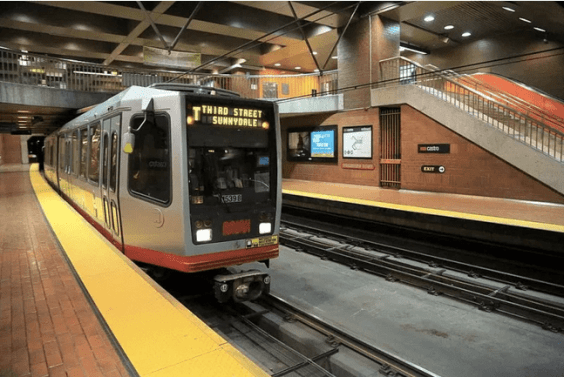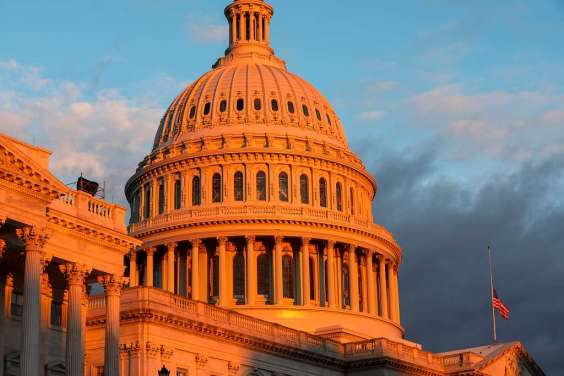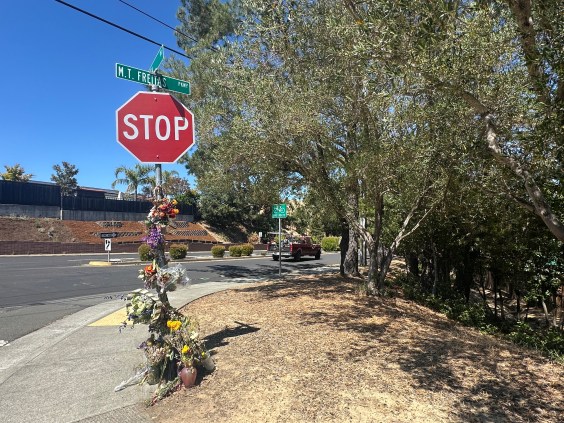After a long discussion Tuesday night, the Sacramento City Council unanimously passed an ordinance that would reduce parking requirements and restrict some car-oriented uses near the city's light rail stations.
The purpose of the ordinance, according to city staff, is to limit low-density auto-oriented uses near transit stations and protect transit investments against incompatible uses. The city will ultimately seek to encourage the development of high-density housing and jobs near transit stations, which would encourage use of the light rail system, help make station areas more walkable and bike-friendly, and help reduce emissions by cutting down on car use in the region.
Transportation research finds that people are generally willing to walk about a quarter mile to reach transit, with some willing to walk as far as a half mile. To ensure those areas are more walkable, Sacramento's ordinance abolishes minimum parking requirements and prohibits certain uses, like gas stations and drive-through restaurants, within a quarter mile of its 23 light-rail stations. It adjusts the rules (reducing existing parking minimums by half, for example) within a half-mile radius of each station.
City staff drew circles on maps to define those quarter-mile and half-mile areas. At Tuesday's meeting, a representative from a large industrial property owner objected that some of the areas within those circles are in reality farther away, because obstacles like freeway overpasses make them difficult to reach directly. This issue prompted city council members to direct staff to find a solution, but did not sway their general support for the ordinance.
Other commercial property owners objected to the restrictions on their properties, with one developer claiming it would kill investment altogether and “force people to move out of this town.” “There is no demand for these transit uses in poor areas,” he said. The city even received a letter from Costco objecting to the policy, even though it wouldn't affect any current of their current development plans.
But Paul Philley of Sacramento Metropolitan Air Quality Management District reminded the council why it was important that this was a citywide ordinance. Planning decisions are usually made one at a time, he said, but “one project builds on the next... Each decision one at a time doesn't seem like it will make a huge difference, but uses follow each other. This ordinance provides clarity and certainty citywide.”
This is a familiar situation in the city of Sacramento, where transit stations have been built near empty lots, but no housing has been developed nearby. The lots get taken up by “low-value” uses like car washes and parking lots, which drives the types of development further away from housing.
But the ordinance, as pointed out by Sacramento Mayor Darrell Steinberg, is “only half the work.” The city also must find ways to encourage housing and mixed-use development, including “proper zoning and incentives for all of the locations we would like to see transformed... The next step is absolutely critical,” he said. “We want to enable developers, with money and zoning and help from the city,” to build the housing the area needs. “We gotta get going on this.”
Vice Mayor Steve Hansen, in a conversation later with Streetsblog, said that the TOD ordinance is part of a larger set of linked efforts by the city, including a General Plan update and the SacRT Forward project that is reworking the city's bus routes. “The next step is to do essentially what S.B. 827 set out to do, which is allow housing by right up to significant densities around transit stops,” he said. Vice Mayor Hansen also wants the General Plan update to consider modifying the city's single-family zone to allow up to three units, somewhat akin to what Minneapolis recently did with its zoning plan.
Planners are also studying the city's commercial corridors, where there is potential for Bus Rapid Transit service, with an eye to allowing the same housing-by-right approval along them. “I don't know what you think came first, the chicken or the egg,” said Hansen, “but it's hard to sustain BRT if you haven't laid policy for housing infill. With our commercial corridors, we can get them to begin filling in, and then we can target them for BRT resources. It may not happen exactly simultaneously, but it would give us the opportunity to build [housing and transit] at same time.”
Hansen sees these changes as part of a larger effort to move away from the '50s style suburban planning standards that have dominated the city's planning for decades. “If we hadn't embraced [new planning paradigms, like the ideas of] Donald Shoup, or Charles Marohn, we'd still be trying to make a failing model work,” he said. “There's enough evidence to show that old model is not only a failure, but the likely cause of many of our problems. It has made it difficult to build housing, and redlined communities, and got rid of mixed-use buildings, all because of the bogeyman of traffic.”
He says the city is now at a tipping point, already building more housing and better active transportation infrastructure. It is was chosen to participate in the Green City Initiative, which will invest $44 million from the Volkswagen settlement in electric charging infrastructure, training, and access to electric cars.
“Sacramento is trying to send the message that we have the power to fix this at the local level,” said Hansen. “And we're doing it because we need to. It's time for the capital city to step out of the shadow of the Capitol and really show initiative and bold leadership” to address the very significant problems in California, including the housing shortage, emissions, climate change, and public health.
But prohibiting car-oriented businesses from using land near transit is, as others pointed out, just the “first half of the task.” It is “a piece of a larger puzzle,” said Hansen. The bigger picture is of
a city “aggressively moving to be a leaders in the state on climate change, transit, walkability, and bikeability.”
“It's the direction I believe cities need to go,” he said, “and it's about time we started acting to get this done.”






